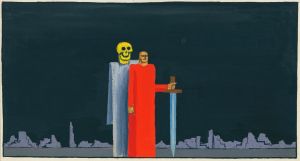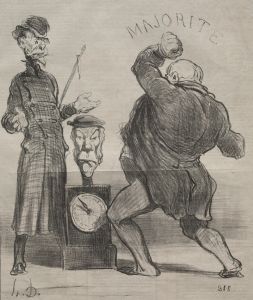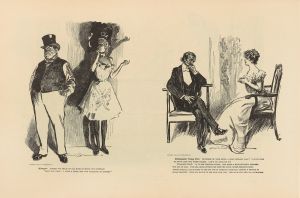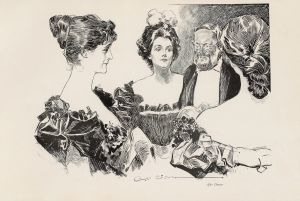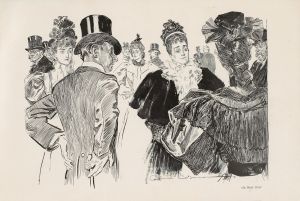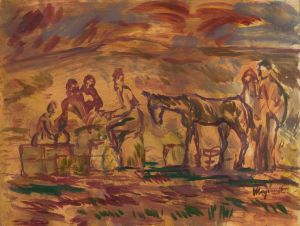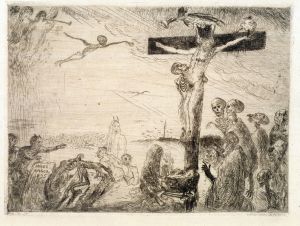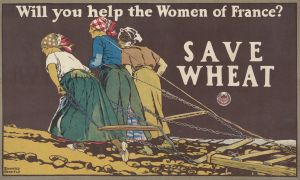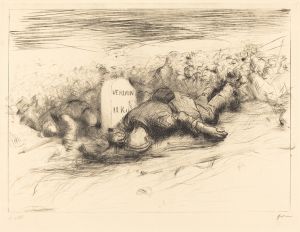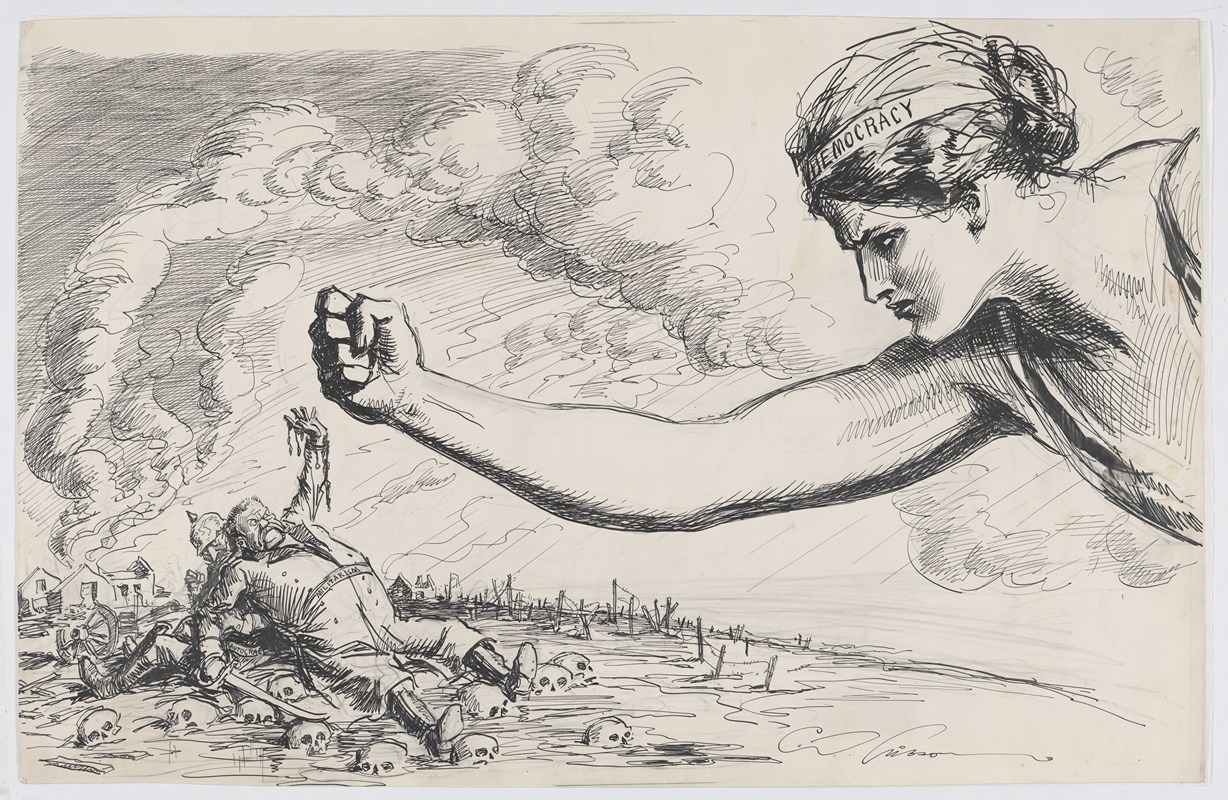
The last blow
A hand-painted replica of Charles Dana Gibson’s masterpiece The last blow, meticulously crafted by professional artists to capture the true essence of the original. Each piece is created with museum-quality canvas and rare mineral pigments, carefully painted by experienced artists with delicate brushstrokes and rich, layered colors to perfectly recreate the texture of the original artwork. Unlike machine-printed reproductions, this hand-painted version brings the painting to life, infused with the artist’s emotions and skill in every stroke. Whether for personal collection or home decoration, it instantly elevates the artistic atmosphere of any space.
Charles Dana Gibson was an influential American illustrator, best known for his creation of the "Gibson Girl," a representation of the idealized American woman at the turn of the 20th century. His work was widely published in magazines such as Life, Harper's Weekly, and Scribner's, and he became one of the most celebrated illustrators of his time. Among his numerous works, "The Last Blow" is one of his notable illustrations, though it is not as widely recognized as some of his other pieces.
"The Last Blow" by Charles Dana Gibson is an illustration that reflects his keen ability to capture social nuances and human emotions. Gibson's illustrations often depicted scenes of social interaction, with a particular focus on the dynamics between men and women. His work was characterized by its detailed line work and the expressive faces of his subjects, which conveyed a range of emotions and social commentary.
In "The Last Blow," Gibson employs his signature style to portray a moment of tension or climax, as suggested by the title. The illustration likely involves characters in a social setting, possibly engaged in a conversation or confrontation that reaches a pivotal moment. Gibson's work often included elements of satire or humor, reflecting the social mores and gender roles of his time. His illustrations were not just artistic expressions but also commentaries on the society he observed.
Gibson's influence extended beyond his illustrations; he played a significant role in shaping the visual culture of his era. The "Gibson Girl" became an iconic image, representing a new standard of femininity and independence for women. This image was characterized by a tall, slender figure, fashionable clothing, and an air of confidence and intelligence. While "The Last Blow" may not directly feature the "Gibson Girl," it is part of the broader body of work that contributed to Gibson's legacy.
Gibson's illustrations were created during a time of significant social change in America, including shifts in gender roles and the rise of the women's suffrage movement. His work captured the complexities of these changes, often highlighting the tensions and contradictions inherent in the evolving social landscape. "The Last Blow," like many of his illustrations, would have resonated with contemporary audiences who recognized the subtleties of his social commentary.
In summary, while specific details about "The Last Blow" are limited, it is a part of Charles Dana Gibson's extensive portfolio that reflects his talent for capturing the intricacies of human interaction and societal norms. His work remains an important part of American illustration history, offering insights into the cultural and social dynamics of the late 19th and early 20th centuries.





